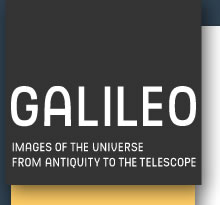


Galileo came across a strange object being sold in Venice as a toy, in the spring of 1609. It consisted of a short tube with a lens at either end, which allowed the viewer to obtain a magnified view of distant objects. Galileo put a great deal of work into perfecting it, and rapidly achieved positive results. In his hands the "toy" became a scientific instrument fated to change the world. He began to explore the night sky in November of that year. What he saw was a universe so completely different from the one described by tradition that his faith in the truth of Copernicus' theory was bolstered enormously. The Moon's surface appeared to him as a rough terrain crisscrossed with valleys and tall mountains, exactly like the Earth; the Milky Way turned out to be a thick mass of stars; he saw four satellites in orbit around Jupiter; the Sun had dark spots on it; Venus had phases like the Moon; and Saturn appeared to consist of three bodies set one beside the other.
The publication of these sensational discoveries made Galileo famous throughout Europe, but it also provoked a sharp reaction from the representatives of traditional cosmology and from the clergy. The latter firmly rejected Copernicus' theory on the grounds that it ran counter to the geocentric assertions enshrined in Holy Scripture.
The first proceedings against Galileo in 1616 resulted in a simple warning. But the outcome of a new trial in 1633 was dramatic. Galileo was sentenced on suspicion of heresy and forced to a formal abjuration.